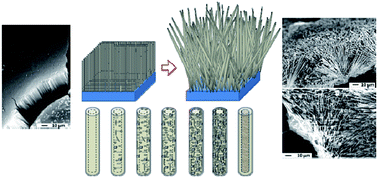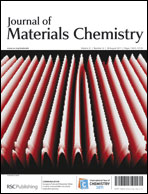Well-crystallized anatase nanowhiskers were successfully grown from a Ti substrate via an anodization process followed by hydrothermal treatment. Progressive morphological and crystallographic evolution of anodic nanotubes to nanowhisker arrays was clearly elucidated. The morphology, crystallinity and optical properties of the final nanowhiskers were extensively investigated using X-ray diffraction (XRD), field emission scanning electron microscopy (FESEM), transmission electron microscopy (TEM), UV-Vis spectroscopy and photoluminescence (PL) techniques. The synthesized TiO2 photocatalyst exhibited excellent photodegradation of Acid Orange 7 (AO7), a common dye used in textile industries, under UV-A irradiation. Photocatalytic performance was evaluated against other TiO2 films of various 1D (one-dimensional) nanostructures, and benchmarked against a Degussa P25 TiO2 coated film. Owing to its unique morphology and monocrystalline defect-free lattice structure, the nanowhisker sample exhibited the highest photocatalytic efficiency. In view of presented experimental results, the 1D hierarchical nanowhisker architecture may find a variety of potential applications in solar cells, endoscopy and photonic devices, etc.

You have access to this article
 Please wait while we load your content...
Something went wrong. Try again?
Please wait while we load your content...
Something went wrong. Try again?


 Please wait while we load your content...
Please wait while we load your content...